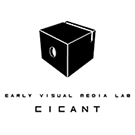A New Panopticism: How George Washington Wilson Romanticised Scotland’s Cities through Stereoscopic Photography [EN]
Ashleigh Black
This paper will examine the panoptic visualisation of Scotland’s cities through the stereoscopic photography of George Washington Wilson. The camera is like an eye; an all-seeing apparatus. A new kind of panopticism was born through Wilson’s artistic skills as a photographer whose gaze served to observe and extol rather than to survey and punish. Wilson was a Scottish photographer who was active from the 1850s until his retirement in 1888 and was renowned for his stereoscopic photographs of Scottish scenery.
In 1859 Oliver Wendell Holmes declared that the stereoscope “is to be the card of introduction to make all mankind acquaintances.” Wilson photographed in stereoscopic vision the Scottish Highlands as well as some of the first views of the Giant’s Causeway. Lesser known however, are his stereoscopic photographs of Scotland’s cities. After the defeat of the Jacobite army in 1745 Scottish culture was repressed and crushed. Subsequently, through the writings and art of influential figures like Sir Walter Scott, Scotland’s culture and identity was revived. It was once said of George Washington Wilson that his camera did more for the people of Scotland than the pen of Sir Walter Scott. This paper will analyse Wilson’s panoptic vision, with regards to his stereos of Scottish cityscapes. The panoptic vision of George Washington Wilson was epitomised by his ability to evoke a sense of pride of place; to turn a simple cityscape into a work of art which not only stirs wonder but transports the viewer entirely.







